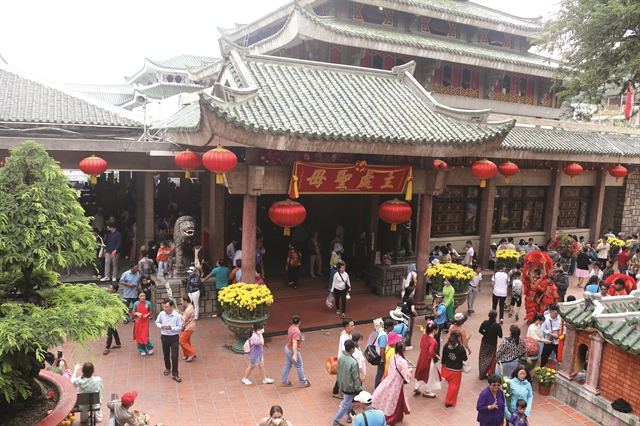An Giang: A Land of Sacred Heritage and Cultural Splendor

Hanoi, The Gulf Observer: An Giang Province, located in southern Vietnam, is known for its sacred landscapes, deep spiritual heritage, and diverse cultural influences. With its legendary Seven Mountains and one of the largest Chăm ethnic communities practicing Islam, An Giang has become a remarkable destination for religious and cultural tourism.
Temple of Bà Chúa Xứ: A Center of Spiritual Devotion
Among An Giang’s most revered religious sites is the Temple of Bà Chúa Xứ (The Lady of the Realm), situated at Sam Mountain in Châu Đốc City. Considered one of the most sacred places of worship in Vietnam, the temple attracts millions of pilgrims annually.
Originally built in the 19th century, the temple underwent multiple renovations, with its current Eastern-style architecture designed in 1972 by architects Huỳnh Kim Mãng and Nguyễn Bá Lăng. The 1.48-meter sandstone statue of the Lady of the Realm, adorned in traditional robes and a crown, stands in the main hall, where devotees offer incense and gifts to seek prosperity, health, and protection.
The Lady of the Realm Festival, held annually from the 23rd to the 27th of the fourth lunar month, is recognized as a National Intangible Heritage and a UNESCO Intangible Cultural Heritage of Humanity. The festival includes sacred rituals, such as the washing of the Lady’s statue with fragrant water infused with jasmine and cinnamon, ceremonial prayers, and offerings to Thoại Ngọc Hầu, a revered Nguyễn Dynasty mandarin.
Masjid Mubarak: A Historic Symbol of Islam in Vietnam
An Giang is also home to over 13,000 Chăm Muslims, preserving centuries-old Islamic traditions. Among its many mosques, the Masjid Mubarak Mosque, located in Châu Phong Commune, Châu Đốc City, holds special significance as a national architectural and spiritual heritage site, recognized in 1989.
Established in 1750, the mosque has undergone five renovations, with its latest design influenced by Indian architect Mohamet Amin, who incorporated elements inspired by Saudi Arabian mosques. With its arched entrance, crescent-moon-adorned domes, and intricately decorated interiors featuring Quranic script, Masjid Mubarak stands as a testament to the rich Islamic heritage of the Chăm people.
The mosque also serves as an educational center, housing a school where children learn the Chăm script and Quranic teachings. It hosts three major Islamic festivals annually, including Maulid (Prophet Muhammad’s birthday), Roja Haji (Hajj pilgrimage celebration), and the Chăm New Year.
An Giang: A Rising Star in Vietnam’s Tourism Industry
With its breathtaking landscapes, eco-tourism sites, spiritual destinations, and rich culinary offerings, An Giang continues to attract visitors. In 2024, the province welcomed approximately 9.1 million tourists, marking a 7% increase from 2023. Tourism revenue soared 73.7% to reach VNĐ10.2 trillion.
During the Lunar New Year celebrations, An Giang hosted musical performances, fireworks displays, and cultural exhibitions, drawing over 770,000 visitors. Iconic destinations such as the Trà Sư Cajuput Forest, the Temple of Bà Chúa Xứ, and Cấm Mountain were among the top attractions.
With ongoing efforts to develop new tourism products, enhance infrastructure, and ensure sustainable tourism practices, An Giang is poised to become a leading cultural and eco-tourism hub in Vietnam.


